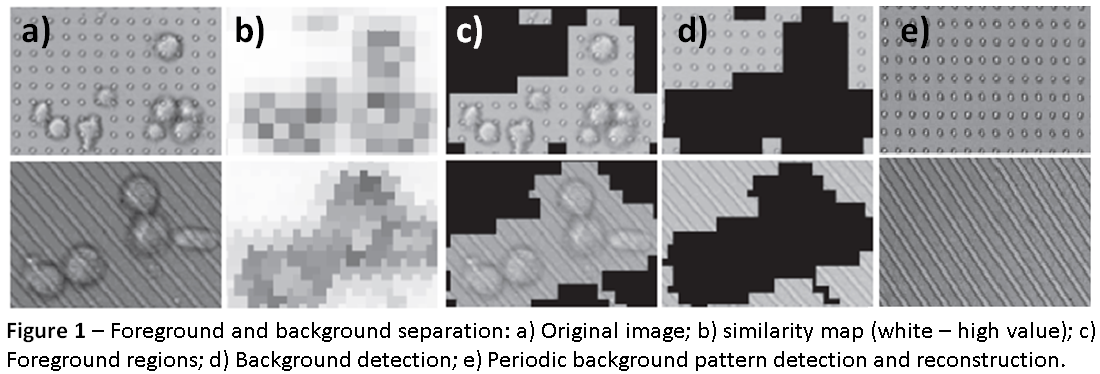AWARDS: Best Poster Presentation | T Esteves and A Carvalho
Tiago Esteves and Ângela Carvalho received the Best Poster Presentation Award on DCE – 2015 Symposium on Electrical and Computer Engineering.

The poster entitled Detection and removal of periodic background patterns for improving of cell tracking analysis focused on the study of cell morphology and mobility on patterned substrates, which is a very important factor in tissue regeneration. Biology researchers produce micropatterned surfaces on biomaterials to modulate cell behavior only through topographic stimuli. Those cell/surface interactions are analysed in order to access cell, adhesion, morphology, proliferation and lineage differentiation. Measurements of cell alignment, elongation and guided mobility on the surface are essential to assess these interactions. Currently there is no automatic methodology to perform these measurements on patterned surfaces. Measurements are performed mainly by visual inspection alone. In order to facilitate cell detection and tracking for mobility and morphology analysis we propose a new approach to automatically detect the periodic background pattern, synthetize the full background, and remove it from the original image. First we evaluate if a periodic background pattern exists (line or pillar pattern surface – Figure 1.a); if it exists, we detect its periodicity (through the analysis of keypoints extracted from the image); from the pattern’s periodicity we are able to detect which regions are foreground and which are background (high and low similarity between neighbour at the detected periodicity respectively – Figure 1.b); given the measured similarity we are able to separate the background pattern from the foreground regions (Figure 1.c,d); It is possible then to synthesize the full background image based on the pattern’s periodicity (Figure 1.e); finally, we subtract the background from the original image obtaining only information related to the existing cells. After obtaining the images without background interference, we perform the analysis of cell’s mobility through the automatic object tracking by association, using local interest point detection.


